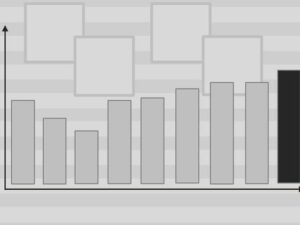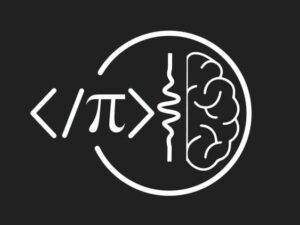Computer Architecture and Organization Comprehensive Course
- Descrição
- Currículo
- FAQ
- Revisões
Computer Architecture and Organization is concerned with the structure and behavior of digital computers. The main objective of this Computer Architecture and Organization subject is to understand the overall basic computer hardware structure, including the peripheral devices.
Prof. Hitesh Dholakiya is a seasoned computer scientist with over 15 years of experience in the field of Computer Architecture and Organization. With a passion for teaching and a wealth of industry knowledge, Prof. Hitesh Dholakiya is dedicated to helping students achieve their academic and professional goals in Computer Architecture and Organization.
This Computer Architecture and Organization course is specially designed for engineering students who want to understand how exactly computer architecture works and is also helpful for working professionals. This Computer Architecture and Organization is a unique course in the online marketplace.
This course is beneficial to the students of various branches such as Degree, Diploma, and Science Students.
This course on Computer Architecture and Organization covers the following Chapters.
1. Computer Architecture
2. Instructions of Computer
3. Control Unit of Computer Architecture
4. Pipeline in Computer Architecture and Organization
5. Execution Unit of Computer Architecture
6. System Bus of Computer Architecture
7. Memory Organization in Computer Architecture
8. IO Organization of Computer Architecture
Topic wise Detailed Syllabus of Computer Architecture and Organization is as follows:
1. Computer Architecture:
Computer Architecture, Von Neumann Architecture, Harvard Architecture, Comparison of Von Neumann and Harvard Architecture, Flynn’s Classification, RISC and CISC Architecture, Little Endian and Big Endian Computer, Memory Interfacing examples, Registers of computer, Registers organization in computer, Common Bus Access in Computer, Examples on Registers of Computer
2. Instructions of Computer:
Instruction Formats, Examples on Instruction Formats, Instruction Cycle, Timing and Flowchart of Instruction cycle, State Transition Diagram of Instruction cycle, Types of Instructions, Addressing Modes in Computer, Examples on Addressing Modes in Computer, Examples in Instruction Execution.
3. Control Unit of Computer Architecture:
CPU Execution Time, Average CPI of CPU and MIPS, Examples on CPU Performance, CPU Performance Parameters, Amdahl’s Law, Micro Operations of Instruction, Hardwired Control Unit, Wilkes Design for Microprogrammed Control Unit, Microprogrammed Control Unit, Comparison of Hardwired Control Unit and Microprogrammed Control Unit, Nano Programming, Microinstruction Format, Examples on Microinstruction Format, Examples on Control Unit, Registers Organization in RISC Processor
4. Pipeline in Computer Architecture and Organization:
Pipelining in Computer, Parameter of Pipelining, Structural Hazards in Pipelining, Data Hazards in Pipelining, Control Hazards in Pipelining, Examples of Pipelining, Examples of Pipelining Hazards, CPI and Speed up in Pipelining with Hazards.
5. Execution Unit of Computer Architecture:
Signed Data Representation and Range of Signed Numbers in Computer, Examples on Number Representation, Normalization of Floating Point Number, IEEE 754 Single Precision Floating Point Number Representation, IEEE 754 Double Precision Floating Point Number Representation, Extreme Cases of Floating Point Representation in IEEE 754 Format, Examples on Floating Point Numbers, Half Adder and Full Adder, Ripple Carry Adder, Carry Look Ahead Adder, 4 bits Adder Subtractor, Booth’s Algorithm, Examples on Booth’s Algorithm, Restoring Division Algorithm, Non-Restoring Division Algorithm.
6. System Bus of Computer Architecture:
System Bus basics, System Bus direction and interfacing with peripherals of computer, Bus Contention and Bus Arbitration techniques, Daisy Chain, Polling & Independent Request Bus Contention Methods.
7. Memory Organization in Computer Architecture:
Memory Organization in Computer, Locality of Reference, Spatial Locality and Temporal Locality, Average Access Time and Access Speed of Memory, Examples of Average Access Time and Access Speed of Memory, Cache Memory Organization, Examples of Cache Memory Organization, Direct Address Mapping in Cache Memory, Examples on Direct Address Mapping in Cache Memory, Fully Associative Address Mapping in Cache Memory, Examples on Fully Associative Address Mapping in Cache Memory, Set Associative Address Mapping in Cache Memory, Examples on Set Associative Address Mapping in Cache Memory, Replacement Strategies in Cache Memory, Examples on Replacement Strategies in Cache Memory, Updation Techniques in Cache Memory, Write Through Updation Technique in Cache Memory, Write Back Updation Technique in Cache Memory, Multi Level Cache Memory, Types of Misses in Cache Memory, Examples on Mapping of Cache Memory, Examples on Multi-Level Cache Memory, Examples on Conflict Misses in Cache Memory.
8. IO Organization of Computer Architecture:
Input Output Organization, Programmed IO, Interrupt Driven IO, Direct Memory Access – DMA, Examples on DMA.
The course on Computer Architecture and Organization delves into the foundational principles governing the design and functionality of computer systems. Students will explore the intricate relationship between hardware and software, understanding how computer components interact to execute instructions.
Emphasis is placed on critical thinking and problem-solving skills, empowering students to analyze and optimize computer systems for efficiency and performance.
This entire course on Computer Architecture and Organization is covered in very simple English language so that it is very easy to grasp core concepts for all class.
By the end of the course, participants will have a comprehensive understanding of Computer Architecture and Organization, equipping them with essential knowledge for future endeavors in the field of computing.
Enroll now and take the first step toward mastering Computer Architecture and Organization core concepts! Join Our Community of students who have transformed their careers with our expert-led course on Computer Architecture and Organization!
All the best…
-
4Introduction to COAVídeo Aula
-
5Computer Architecture in COAVídeo Aula
-
6Von Neumann ArchitectureVídeo Aula
-
7Harvard ArchitectureVídeo Aula
-
8Von Neumann Vs Harvard ArchitectureVídeo Aula
-
9Flynn's ClassificationVídeo Aula
-
10RISC & CISC ArchitectureVídeo Aula
-
11Little Endian and Big Endian ComputerVídeo Aula
-
12Examples of Little Endian and Big EndianVídeo Aula
-
13Exclusive Questions of Computer OrganizationVídeo Aula
-
14Memory Interfacing with ComputerVídeo Aula
-
15Memory Interfacing with ComputerVídeo Aula
-
16Memory Interfacing with ComputerVídeo Aula
-
17Memory Interfacing with ComputerVídeo Aula
-
18Registers of Basic ComputerVídeo Aula
-
19Registers Organization in COAVídeo Aula
-
20Common Bus Access using MUXVídeo Aula
-
21Working of Computer using Common BusVídeo Aula
-
22Questions of Registers of ComputerVídeo Aula
-
23Computer ArchitectureQuestionário
-
24Computer ArchitectureQuestionário
-
25Instruction Formats & ALUVídeo Aula
-
26Examples on Instruction FormatVídeo Aula
-
27Instruction CycleVídeo Aula
-
28Timings & Flowchart of Instruction CycleVídeo Aula
-
29Instruction Cycle State Transition DiagramVídeo Aula
-
30Types of InstructionsVídeo Aula
-
31Addressing ModesVídeo Aula
-
32Example of Addressing ModesVídeo Aula
-
33Example of Addressing ModesVídeo Aula
-
34Example of Addressing ModesVídeo Aula
-
35Example of Addressing ModesVídeo Aula
-
36Examples of Instruction ExecutionVídeo Aula
-
37Examples of Instruction ExecutionVídeo Aula
-
38Examples of Instruction ExecutionVídeo Aula
-
39Examples of Instruction FormatVídeo Aula
-
40Examples of Instruction FormatVídeo Aula
-
41Examples of Instruction FormatVídeo Aula
-
42Examples of Instruction FormatVídeo Aula
-
43InstructionsQuestionário
-
44CPU Performance ParametersVídeo Aula
-
45Examples on CPU PerformanceVídeo Aula
-
46Speed Up Factor of CPUVídeo Aula
-
47Amdahl's LawVídeo Aula
-
48Examples on CPU PerformanceVídeo Aula
-
49Examples of CPU PerformanceVídeo Aula
-
50Micro Operations of InstructionVídeo Aula
-
51Hardwired Control UnitsVídeo Aula
-
52Wilkes Design for Microprogrammed Control UnitVídeo Aula
-
53Basic Microprogrammed Control UnitVídeo Aula
-
54Hardwired Control Unit Vs Microprogrammed CUVídeo Aula
-
55Horizontal Vs Vertical MicroinstructionVídeo Aula
-
56Nano ProgrammingVídeo Aula
-
57Microinstruction FormatVídeo Aula
-
58Examples based on MicroinstructionVídeo Aula
-
59Examples based on MicroinstructionVídeo Aula
-
60Examples based on MicroinstructionVídeo Aula
-
61Examples of Control UnitVídeo Aula
-
62Registers Organization of RISC ProcessorVídeo Aula
-
63CPU PerformanceQuestionário
-
64Pipelining in COAVídeo Aula
-
65Parameters of PipeliningVídeo Aula
-
66Structural HazardsVídeo Aula
-
67Data HazardsVídeo Aula
-
68Control HazardsVídeo Aula
-
69Examples on PipeliningVídeo Aula
-
70Examples on PipeliningVídeo Aula
-
71Examples on PipeliningVídeo Aula
-
72Examples on PipeliningVídeo Aula
-
73Examples on Pipelining HazardsVídeo Aula
-
74Example of Addressing ModesVídeo Aula
-
75Non Synchronized PipelineVídeo Aula
-
76Non Synchronized PipelineVídeo Aula
-
77CPI & Speed Up in Pipelining with HazardsVídeo Aula
-
78Examples on Pipeline HazardsVídeo Aula
-
79PipelineQuestionário












